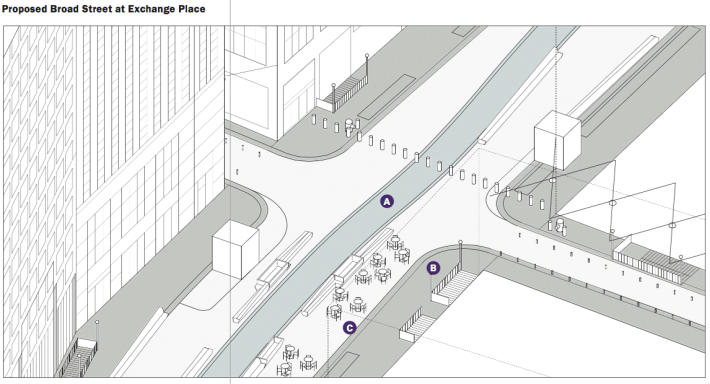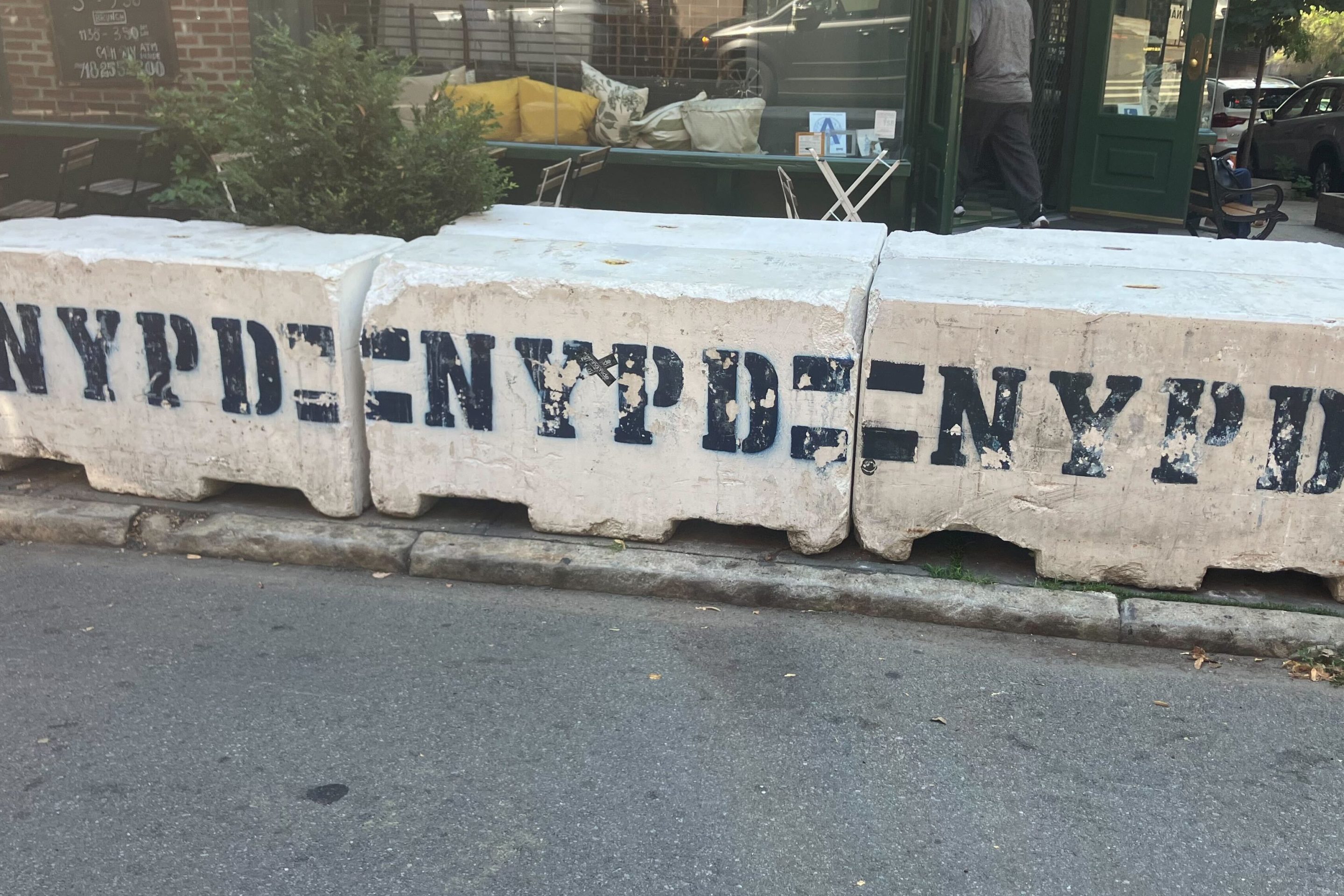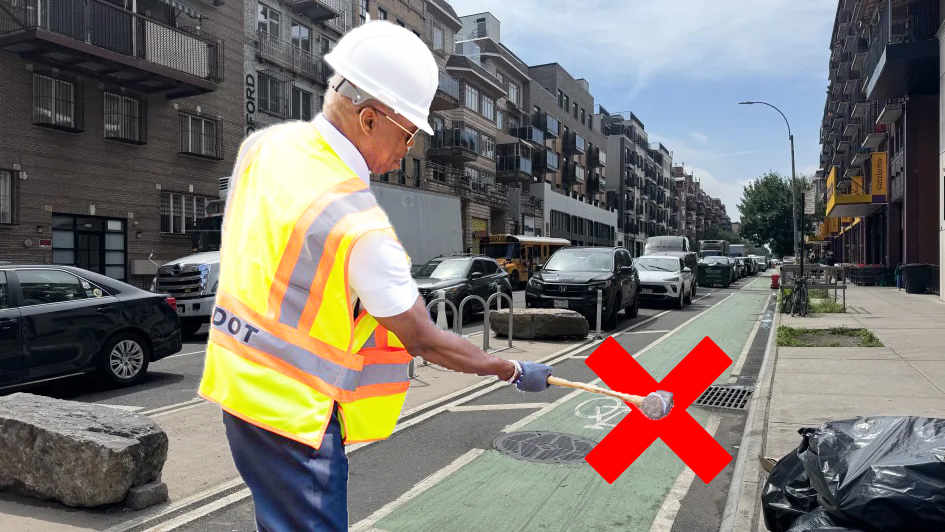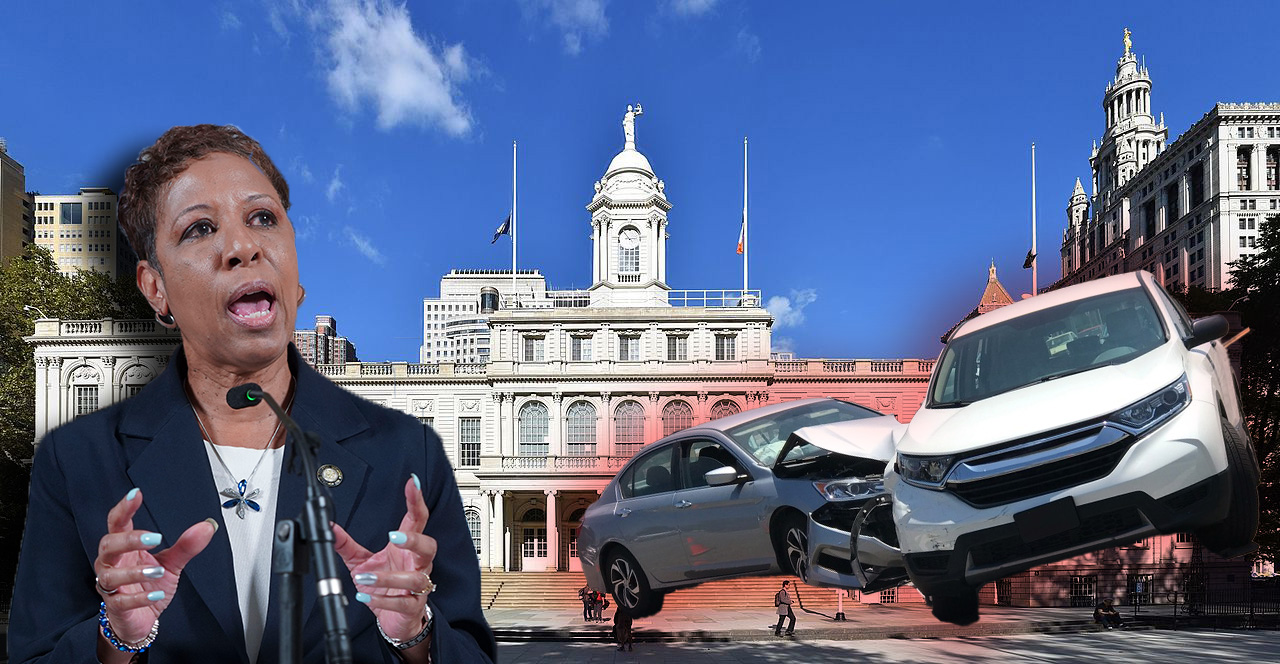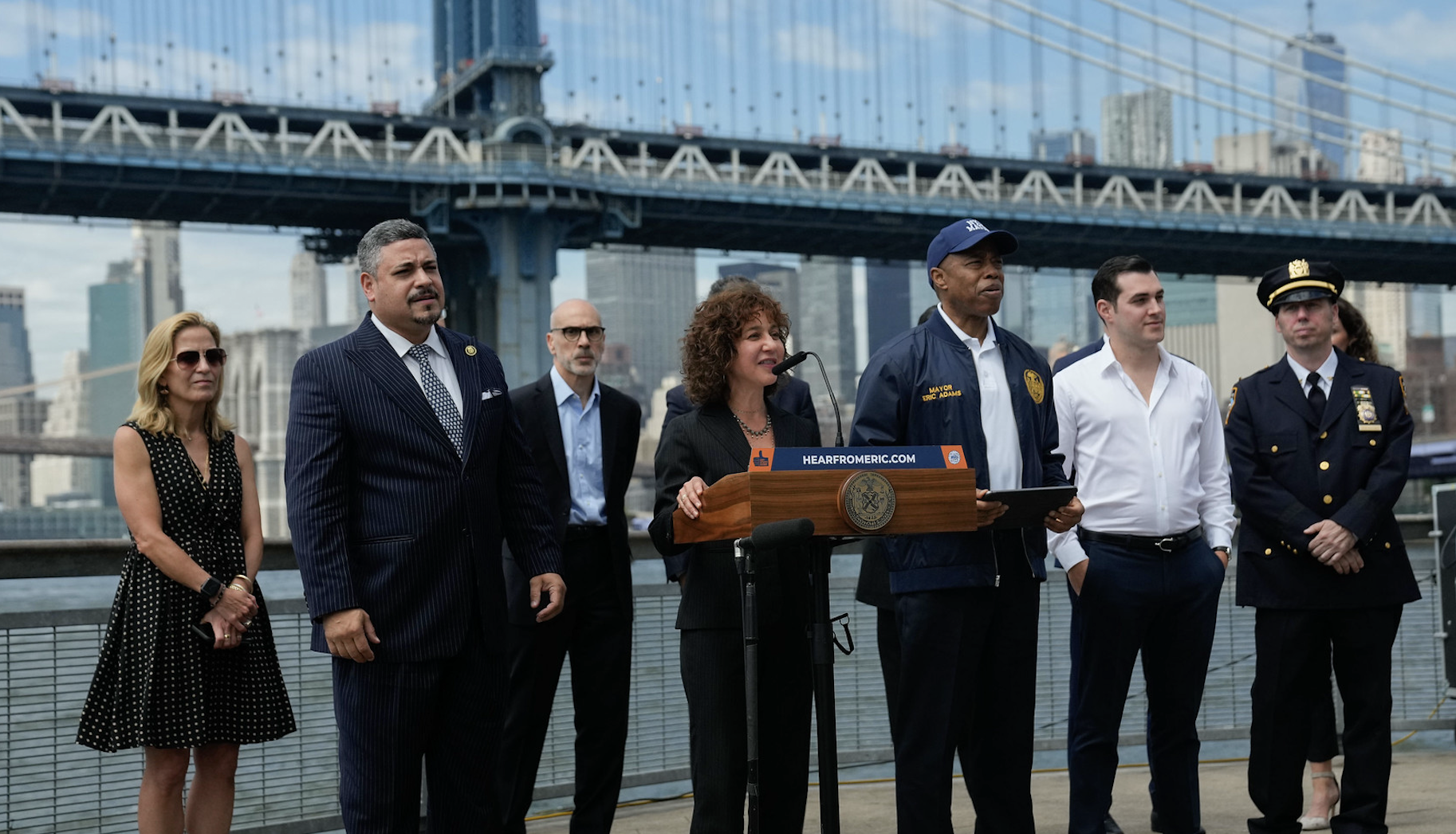The corner of Broad Street and Wall Street has been closed to motor vehicle traffic since after 9/11, but it's never been truly pedestrianized. Surrounding streets are a mess of security theater, cluttered with obtrusive barriers and delivery vehicles illegally blocking sidewalks and curbs. There are barely any cars in the Financial District, but you can hardly tell thanks to how the city manages the streets.
Now the Downtown Alliance wants to formalize the walking environment. In a report released yesterday, the Lower Manhattan BID proposes to eliminate the curbs on Wall Street, New Street, Broad Street, and Exchange Place in favor of "shared streets" that give precedence to pedestrians over motorists and cyclists [PDF].
On Broad Street, where security measures consist of a hodgepodge of fences and ad hoc barricades, including deadly vehicles, the report envisions a narrow passage for cars. The bulk of the space would be devoted to seating and walking.
On other streets, bollards would delineate lanes for motor vehicles.
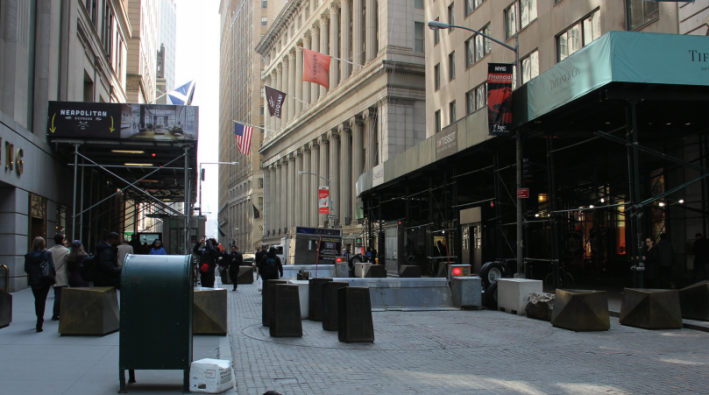
At four intersections that function as gateways to the so-called Stock Exchange District -- Nassau Street and Pine Street, Wall Street and Williams Street, Wall Street and Broadway, and Exchange Place and Broadway -- the report proposes repurposing parking spots for pedestrian space.
Commercial deliveries and placard abusers account for much of the neighborhood's motor vehicle traffic. It's on NYPD to keep placard abusers and other illegally-parked vehicles out of the area. For commercial deliveries, in addition to new delivery zones on New Street, the Alliance wants to pilot an "urban delivery consolidation center," where packages could be deposited, then distributed "via hand-truck or small vehicle," to keep big trucks away from people.
The Alliance proposals are backed by area property owners and elected officials, including Manhattan Borough President Gale Brewer. The report has not been endorsed by NYPD or DOT, though both agencies were consulted in developing the recommendations.
The city held a one-day "Shared Streets" event in the area in August 2016. Speaking to Streetsblog about that event, Transportation Commissioner Polly Trottenberg said the neighborhood's streets already function as "shared space," even if how they're designed doesn't reflect that.
It will be up to City Hall to build on the BID's proposal.

